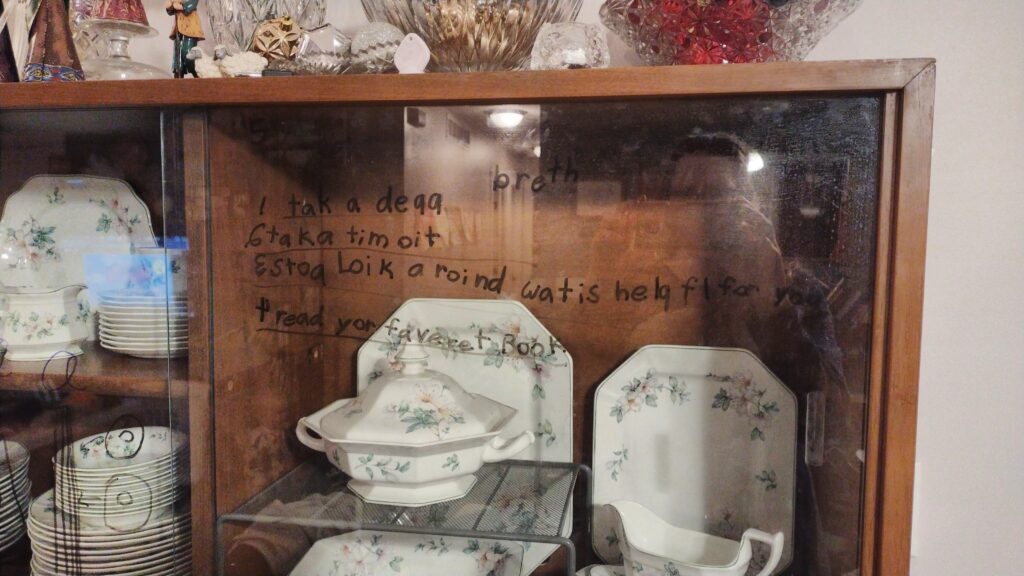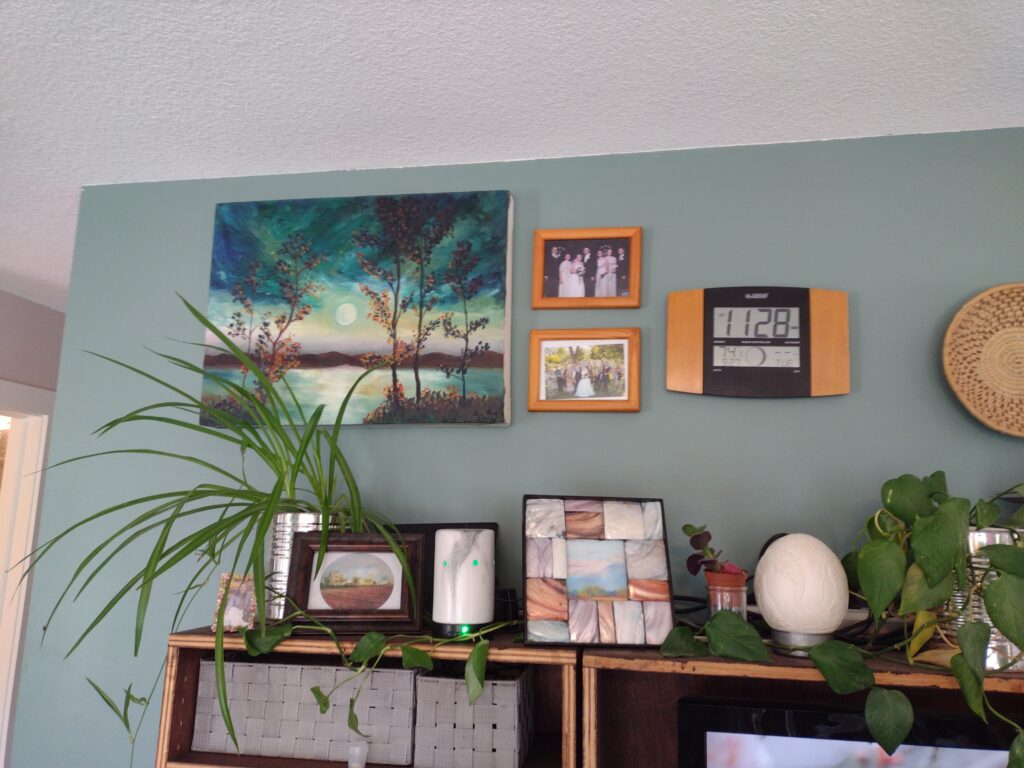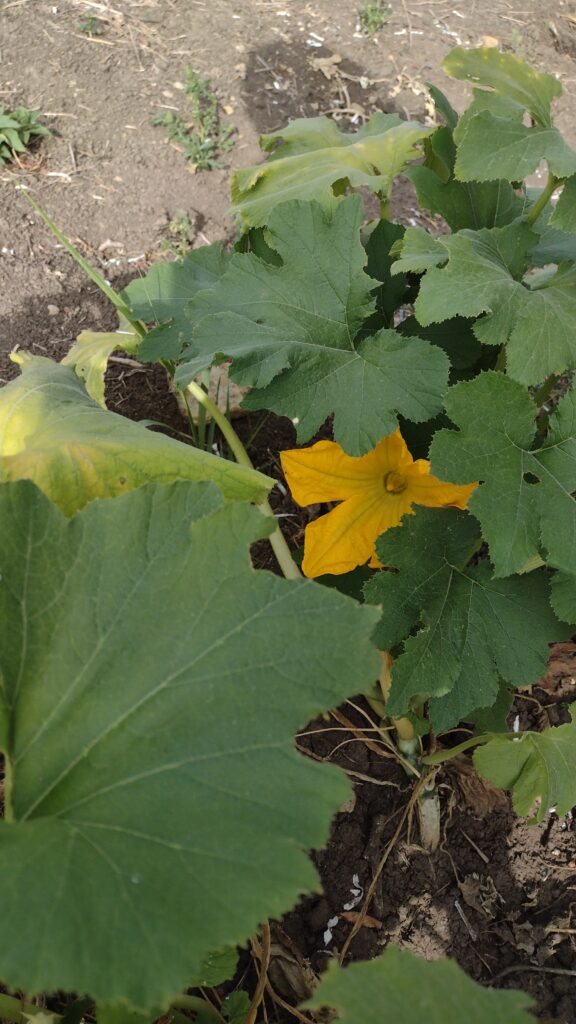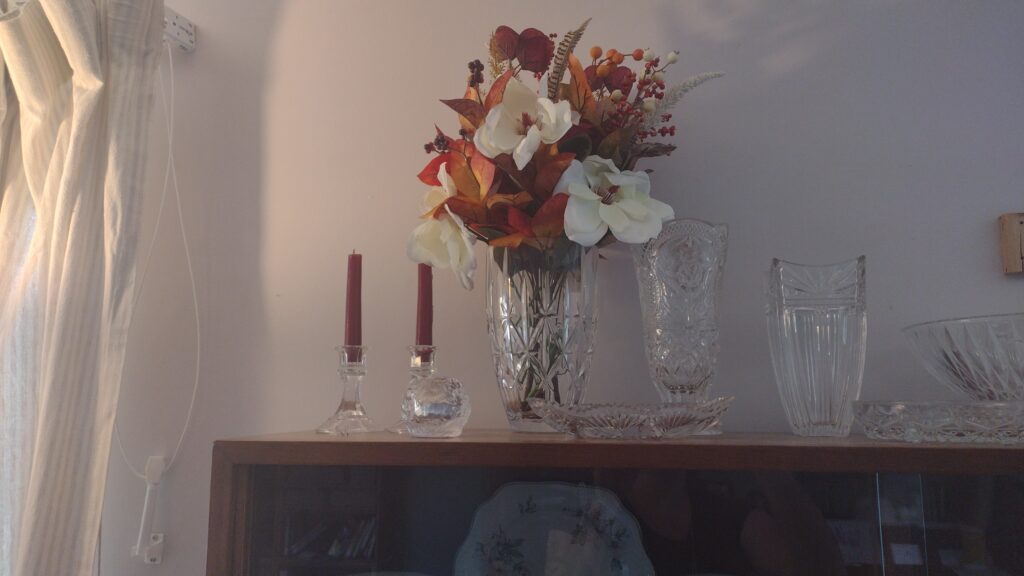Tirzah Mae was a rather old kindergartener – she turned six just a couple months in. Louis has been a rather young kindergartener – he turned five a mere week before we started our school year in July of last year.
I took this into account in my plan and intended to take things very slowly in a sort of kindergarten-lite.
Since we do most of our “subject work” together as a family, Louis’s individual work was just phonics, handwriting, and math.
Phonics: American Language Series K, with supplements
Young and male as Louis was, I knew we were going to need to take it slow with phonics. So I printed some supplemental material to give us more practice than the American Language Series K provides. I appreciate The Measured Mom blog, so I went there first and found just what I’d hoped for: an alphabet letter find, a beginning sounds coloring page, and some beginning sounds clip cards. Hedging my bets, I also opted to have Louis do his workbook pages for ALS-K in a page protector with a dry erase marker so he could redo a page as many times as he needed to. Turns out, I was really glad I had.
It only took a couple of lessons to discover that the phonemic awareness Tirzah Mae had just arrived at through singing and chanting and whatever did not come quite so naturally to my brand new five year old. He could kinda-sorta isolate beginning sounds, but definitely not ending sounds. And segmenting and blending sounds? Nope.
I began to panic. Why had I gone all gung-ho purchasing the same curriculum I’d learned to read with before I’d had a chance to read up on the science of reading? I should have done my research better and gotten a good Orton-Gillingham program that could meet all my students’ needs, whatever might come. I should have gotten Logic of English.
But I hadn’t gotten another curriculum, and since he was just barely five and since I was able to identify the problem (phonemic awareness), I started him on the fast track of the Sightwords.com Phonemic Awareness Program. We worked on it for a semester until I observed he and his younger sister playing all sorts of word games together, switching out rimes, making new rhymes, blending and segmenting like pros, and demonstrating, well, phonemic awareness.
Back to ALS-K, and this time with good success. We spent 2-3 days on each lesson, learning the sounds of each letter and the consonant digraphs and to read one-syllable short vowel words. (Yes, the printables from the Measured Mom were very helpful.)
Handwriting
I wanted to be really careful here to get the letter formation down without overextending my young boy’s fine motor control. So I spent two days on each letter, using chants from the Kindergarten Works blog. The first day, we formed the letter in the air with our finger and then wrote it a few times with a dry erase marker on these letter cards (I had him use his finger to erase in the exact same path that he’d used to draw the letter in the first place.) The second day, we wrote that letter in a sand tray and then completed the corresponding “letters of all sizes” worksheet from The Measured Mom (uppercase and lowercase worksheets) .
After we had finished both uppercase and lowercase letters, we started a program called Sylladot. I met Carla Cox, the author of the Sylladot phonics curriculum, at the Great Homeschool Convention in St Charles Missouri back in March. Ms. Cox gives away copies of the kindergarten book to mothers of five-year-olds – and when she discovered that I had a seven-year-old who was just now working on vowel digraphs, a five-year-old, and a four-year-old nipping on the five-year-old’s heels, she gave me three copies of the kindergarten book. When I got the book home, I was able to see that Tirzah Mae was really too advanced for it, but that it might serve Louis very well. The first 30 or so lessons focus on learning the names of the letters of the alphabet and how to write them – and I was ready for some new handwriting work, so this seemed good to me (also, I typically focus on sounds such that my kids say /F/ instead of /ef/ when they’re asked to read an eye chart so learning the letter names might be handy!)
I have really enjoyed the clever little pictures and sayings that help the kids remember the names and formations of the letters. Unfortunately, I don’t think Louis could have started with this as his phonics program last fall since his fine motor development probably wasn’t far enough along then. (Beth-Ellen, on the other hand, will likely not have any problem starting Sylladot for her Pre-K next month. I also plan to use Ms. Cox’s alphabet chart and teaching technique for the little girls’ preschool “circle time” next year.)
Mathematics: Shiller Math Kit 1
Perhaps with Louis I will finally get my money’s worth from Shiller Math. He hasn’t asked for a workbook yet, at any rate.
I personally love Shiller Math. Manipulative-based, scripted lessons for low prep, and everything is in the box. The only thing I don’t like (well, apart from the songs that I find cheesy and not particularly helpful for learning) is the log sheet for recording lessons. It’s way too difficult to decide what to do next. So what I’ve done is make a spreadsheet with lesson numbers and names on the first column, a group of columns labeled “Dates worked on”, and a final column marked “Date completed”. After we work a lesson, we mark the date in a “dates worked on” box. If Louis has clearly mastered the concept of that lesson, I mark a line through the remaining “dates worked on” boxes and write the date in the “date completed” column.
Generally speaking, we did one new lesson and one review lesson daily, which took around 20 minutes (hello, Charlotte Mason). For review, I started with the oldest incomplete lesson and did the next incomplete lesson the next day and so on until we were reviewing the lesson we had just done the day before. Then we’d start again at the beginning with the earliest incomplete lesson. So far, I’ve really enjoyed this approach and feel like Louis also appreciates it.
So What’s Next?
We’re planning a pretty boring first grade year – it’s pretty much kindergarten redux. I plan to continue with ALS-K and Sylladot both, using Sylladot as supplemental work while we’re keeping our progress through ALS-K slow. The next part of Sylladot does not have a lot of handwriting, so I’ll be having him do copywork to practice his script. We will continue with Shiller Math, but I did have Math Mammoth 1 printed just in case we need to supplement with some workbook-type work. Louis and Tirzah Mae will also be working together through Core Knowledge’s What Your 1st Grader Needs to Know.





